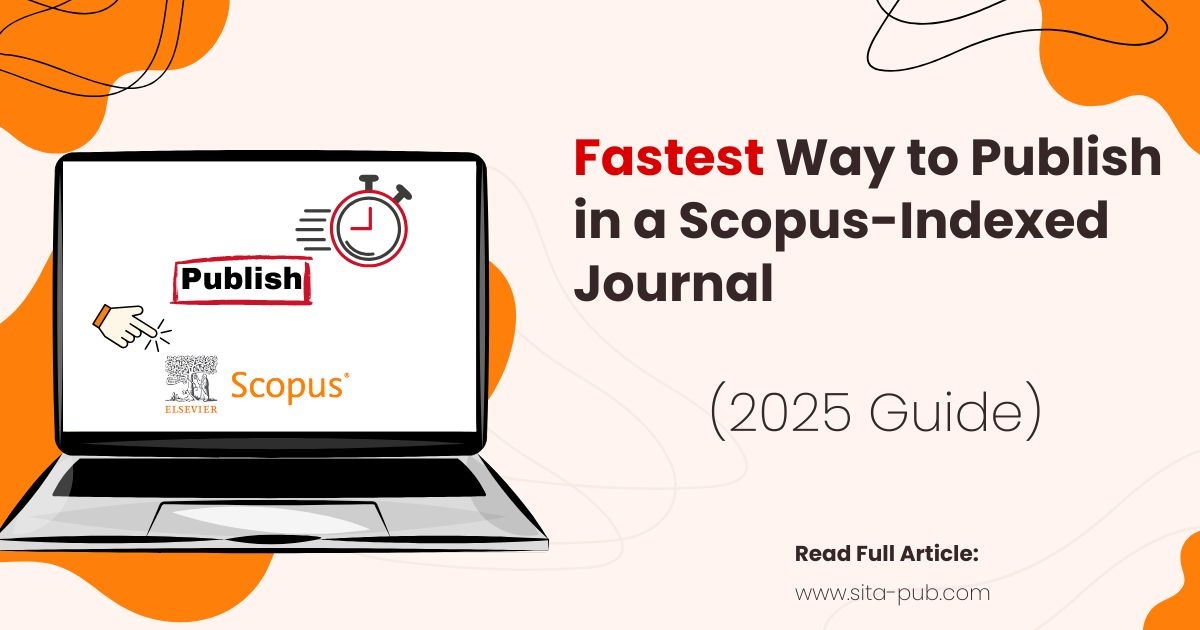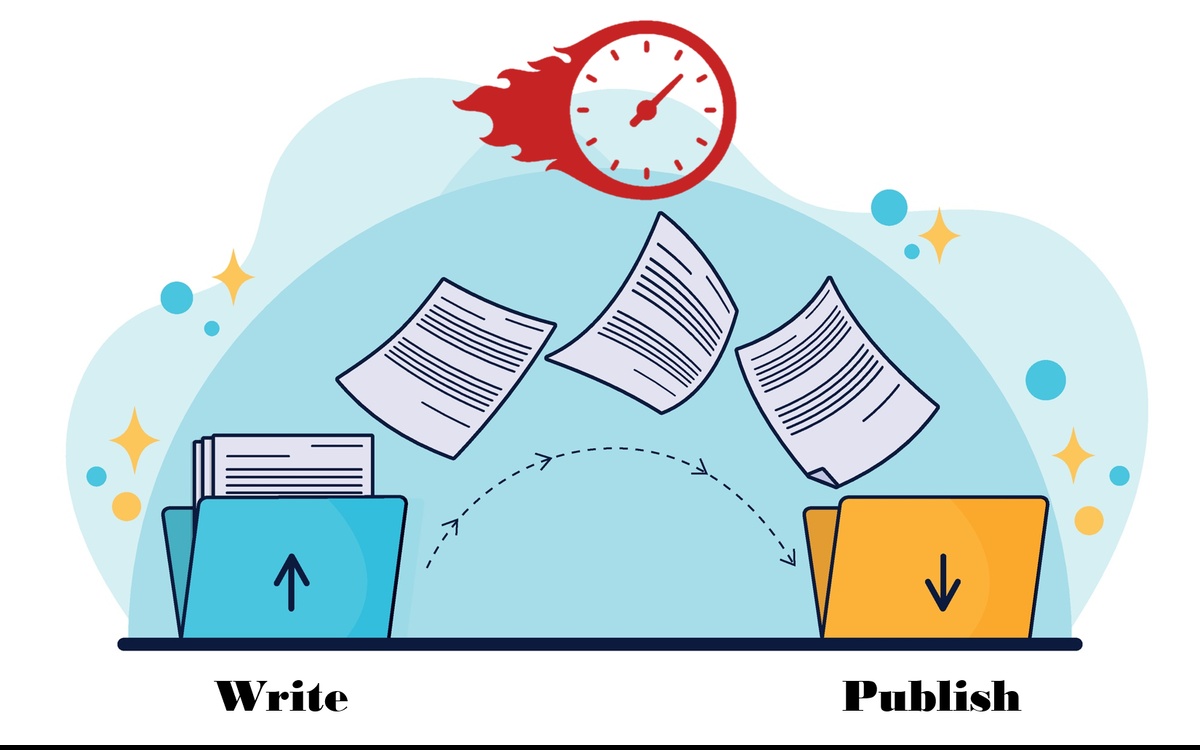Fastest Way to Publish in a Scopus-Indexed Journal (2025 Guide)


Publishing quickly in a Scopus-indexed journal is a valuable opportunity for researchers worldwide, especially those in Saudi Arabia and the broader Middle East. Whether you face tight deadlines for graduation, funding, or career advancement, getting your research published fast can make a significant difference. This 2025 guide offers practical tips for accelerating the publishing process without sacrificing standards.
We also cover important regional issues like machine learning, SDGs, and advances in medical research and oncology, and how you can leverage them to increase your chances of being published within a timely manner.
There is growing academic and research pressure worldwide, particularly in the Middle East, where institutions are emphasizing quick publication in global knowledge repositories like Scopus and Web of Science. For scholars working in fields like oncology, computing, or applied science and technology, publishing quickly is the key to securing grants and meeting institutional requirements.

Quick publishing is not simply an issue of speed—it's a strategic planning process to avoid common delays and enhance your paper's prospects for first-time acceptance. Whether your research involves risk analysis in exceptional math and science or prediction in medical studies, fast-track publishing can assist.
Many believe publishing quickly in Scopus is impossible due to rigid peer review and long editorial cycles. However, understanding journal quartiles and submission timelines can debunk this myth.
Fast doesn’t always mean “days.” For most Scopus journals, a fast track can be 3-6 months from submission to publication. Knowing which journals offer rapid peer review or have monthly issues can save you weeks or months.
The review cycles of journals in the Q3 and Q4 quartiles are often faster than those of the prestigious Q1 and Q2 journals. Sometimes "fast track" choices are offered by lower quartile journals, although extended peer review may be found in higher tier journals that are part of the Clarivate journal list or Scopus sources.
• Q1 & Q2 journals: Longer reviews, longer periods
• Q3 & Q4 journals: Less competitive, faster reviews, and more frequent publication cycles (monthly instead of quarterly)
Related Article:
Use Scopus journal search tools, SJR, or Web of Science master journal list to rank journals by review time, scope, and indexing. Cross-reference with Scopus.com and seek out journals that publish monthly or have "rapid publication" options.
Scopus Sources and Scopus Author ID to verify journal indexing and author profiles
Journal Finder tools on publisher websites
SJR (SCImago Journal Rank) to check journal metrics and quartiles
Submission-to-decision time clearly stated
Journal scope matching your research on machine learning, sustainable development goals, or oncology
Recent publication trends and acceptance rates

Open Access and Fast Track publishing are two distinct concepts, commonly mixed up by early-stage researchers. Though both can maximize your research visibility and impact, they play different roles in the publication process.
Open Access (OA) is the free availability of your published article to readers anywhere, without subscription-based barriers. It is a model that is recognized for increasing readership and citation. Open Access generally comes with Article Processing Charges (APCs), and it has no influence on the peer review speed or editorial decisions.
Fast Track publishing, conversely, deals with accelerating the publication and review process. There are some journals that provide fast-track options for authors who require fast decisions, where they even guarantee an outcome in a couple of weeks. This could entail extra charges or be kept for submissions of high priority.
Though they can be provided together, Open Access and Fast Track differ. One concerns post-publication accessibility, the other pre-publication speed. Opting for both can be optimum for research that is not only urgent but also requires broad dissemination.
Related Article:
Explain why your research fits the journal’s focus and mention if you’re targeting fast-track options. Highlight relevance to current issues, such as computing strategies in the Middle East or sustainable development.
Before submission, confirm your manuscript follows the journal’s style guide precisely—references, figures, and language. Utilize professional editing services to polish the article.
When you receive feedback, address it thoroughly and return revisions promptly. This can significantly reduce overall publication time.

These occur when the paper is immediately rejected without review—often due to poor formatting, missing elements, or unclear presentation. Make sure your submission follows all journal guidelines exactly.
Poor English can delay or doom acceptance. Use professional language editing services or internal peer review before submission.
Avoid submitting to journals unrelated to your field. Use ORCID and Scopus Author Profile tools to identify the right outlets.

The fastest way to publish in a Scopus-indexed journal in 2025 is to target Q3 or Q4 journals that publish monthly, align your paper with their scope from the start, and ensure your manuscript meets all formatting and submission requirements on the first try. Using professional editing or journal-matching services can also save weeks of back-and-forth.
At SITA Academy, we specialize in research publication support, helping scholars like you publish faster and smarter.
Our expert team carefully matches your paper with Scopus-indexed journals that offer Fast Track options.
We consider your field of study, publication goals, and timeline to provide a personalized list of suitable journals.
We only suggest reliable, ethical journals indexed in Scopus, Web of Science, and more.

Send us your field of research, and our professionals will send back a curated list of fast-track journals tailored to your needs—saving you weeks of searching.
If you have any questions, inquiries, or would like to learn more about our services, please don't hesitate to reach out to us. Our dedicated team is ready to assist you.